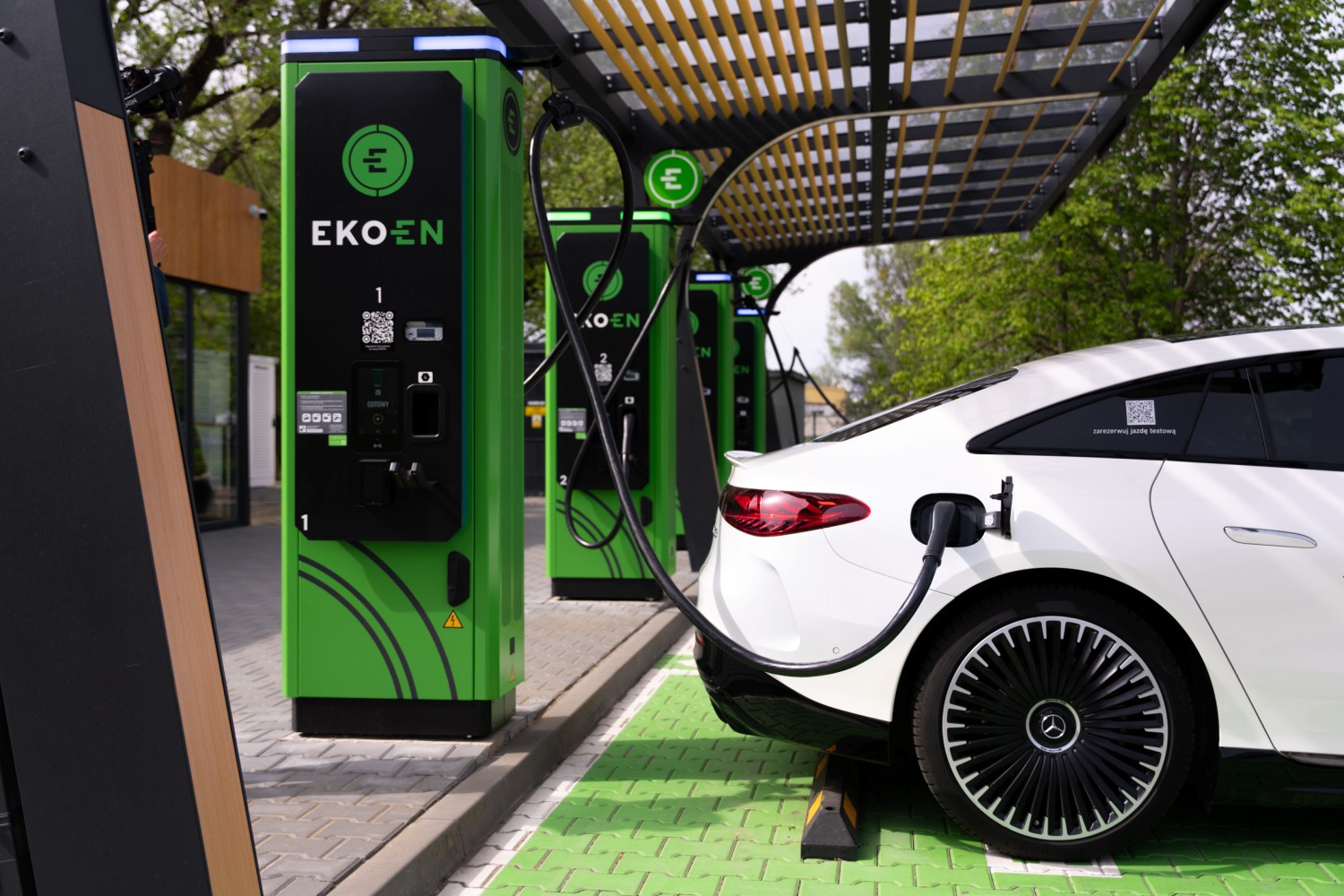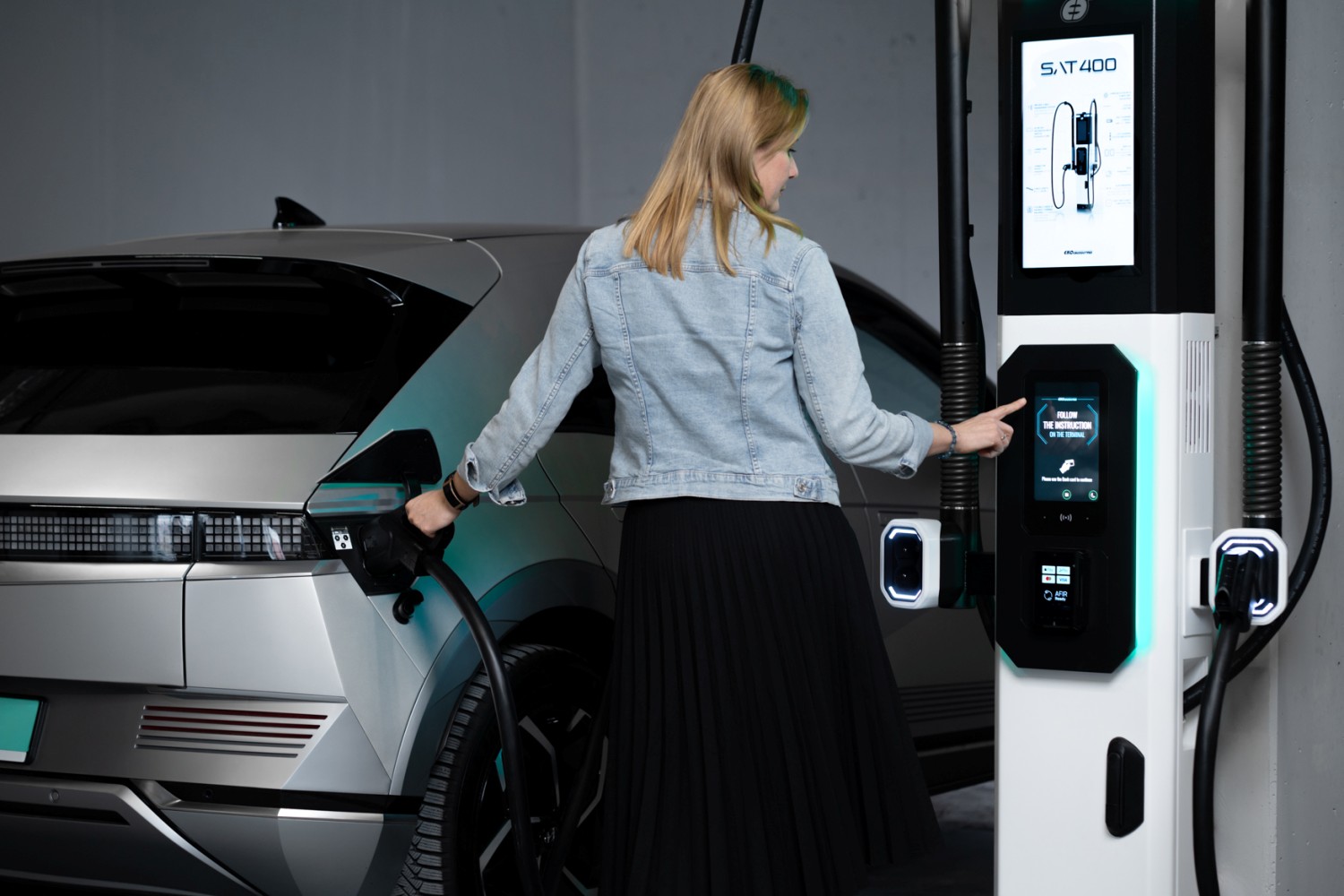Nowadays, owning an electric car isn't nearly as unusual as it was ten years ago.
In fact, according to Our World in Data, around 1-in-4 new cars sold in 2023 were electric. It creates a profitable opportunity for anyone willing to offer electric vehicle (EV) charging solutions.
Retail locations like restaurants and hotels stand to gain the most from this situation. These establishments can use their strategic placement and invest in commercial charging stations to generate a new revenue stream.
More specifically, they can earn money by installing EV charging stations and setting charging fees — all while catering to the growing number of eco-conscious customers.
Let's explore how giving your clients access to public EV charging can improve your bottom line below.
Key Takeaways
- Implement tiered pricing models to maximize revenue based on charging time and speed.
- Offer subscription models for frequent users to ensure consistent revenue.
- Integrate dynamic pricing based on energy demand to optimize earnings.
- Promote charging stations through apps and online platforms for higher usage and foot traffic.
1. Collect Charging Fees for Station Use
To generate revenue from EV charging, you need to install EV charging stations at your retail location and set appropriate charging fees.
An excellent place to start is by identifying the type of EV charging stations that best fit your needs.
Level 2 chargers are a popular choice for retail locations due to their balance of cost and charging speed. In just one hour, these chargers can add 40 to 64 kilometers (25 to 40 miles) of range to an electric vehicle.
This quality makes them an ideal choice for various businesses where drivers might be parked for a while. For example, customers who stay at a hotel for a night can leave with their EVs charged and ready to go.
DC fast chargers offer quicker charging times but incur higher installation and maintenance costs.
Still, they are an excellent investment. Charging point operators usually report higher earnings from level 3 charging stations than from charging stations of other types.
These high-powered devices can add 240 kilometers (150 miles) of range — or even more — in an hour.
Because of that, they are best suited for places where drivers only stay for a short time. Think about fuel retailers, convenience stores, and fast-food restaurants.

You can structure your charging fees based on time, energy consumed, or a flat rate.
Here are a few tips that will help you create an effective pricing model for your chargers:
- Calculate the cost of electricity for each charger. It will give you a baseline for your pricing.
- Survey the landscape. Look around to see how many other public chargers are nearby and take note of their pricing.
- Estimate user demand. If you have the resources, gather data on how many people are likely to use your chargers. It can guide your pricing strategy and ensure your chargers meet user needs.
Balancing these factors — costs, competition, and demand — will help you create a fair and attractive pricing model for your chargers.
Investing in a charging station usually pays off in a few years. This estimate is based on the profit margin that charging point operators (CPOs) see.
On average, between 15% and 30% of the charging fee goes to the CPO as profit. Given this assessment, we can predict you will recoup your investment in about 5 to 10 years.
Still, with so many variables in play, you'll need to monitor the situation and adjust as you go.
2. Attract Eco-Conscious Customers
Drawing eco-conscious customers to your retail location is a simple way to boost your brand's reputation and drive sustainable growth.
Electric vehicle drivers often prioritize convenience when choosing charging stations. They prefer options close to their homes and workplaces, even if they aren't the cheapest.
This preference highlights a significant opportunity for property managers and business owners.
For instance, owners of condo complexes can add EV charging stations to improve the appeal of their properties. Tenants will appreciate the convenience of having a charging station nearby, which could increase tenant satisfaction and retention.
If you're still on the fence about this idea, consider the following benefits:
- Convenience: Offering a charging infrastructure at your retail locations makes it convenient for EV owners to shop while their vehicles charge. It creates an additional revenue stream for your business that simultaneously improves your customers' experience.
- Brand Alignment: Demonstrating your commitment to sustainability aligns your brand with eco-friendly values, making it more appealing to eco-conscious consumers.
- Extended Stay: Customers are likely to spend more time at your location while waiting for their EVs to charge, potentially increasing their spending.
- Community Leadership: By providing EV charging stations, you position your business as a leader in the community, fostering goodwill and positive word-of-mouth.
3. Understand & Implement Efficient Pricing Strategies
Making money from EV charging requires more effort than just setting up an EV charger in your parking lot and calling it a day.
To truly make the most out of this opportunity, you should take some time to determine the best strategy for your EV charging business.
Adopting a tiered charging pricing model is a widespread practice. In this model, the cost varies based on charging time and speed.
For instance, higher rates for fast charging during peak hours can manage demand and optimize station usage.
Offering flexible pricing through charging apps is also a good way to improve the charging experience. These apps can provide real-time updates on availability and pricing, allowing drivers to make informed decisions.
By integrating dynamic pricing, you can adjust rates based on energy costs, demand, and time of day. It maximizes your revenue while aligning with sustainability goals.
4. Offer Premium Charging Services
Another method to attract EV drivers and increase revenue is to offer a charging solution that these drivers already recognize and depend on.
Working with an established leader in the charging industry — such as Ekoenergetyka — can help meet their expectations.
Combining Level 3 DC fast charging stations with Level 2 chargers is also a wise move from a strategic viewpoint.
By catering to both types of customers, you can create a versatile setup. Fast chargers are suitable for those in a hurry, while slower chargers appeal to drivers with time to spare.
This balanced approach can help maximize revenue and improve customer satisfaction across various user needs.
On top of that, consider offering subscription models for frequent users, providing them with discounted rates for a monthly fee. Doing so will ensure a consistent revenue stream and foster customer loyalty.
5. Promote Your EV Charging Business Online
You can promote your EV charging stations by leveraging digital marketing channels.
Listing your charging station on popular EV charging apps is a no-brainer. Many EV drivers already rely on these apps to find stations near them.
You can further optimize your online presence by incorporating keywords related to EV charging infrastructure into your website and social media profiles.
Building a reputable brand online will help EV drivers find and use your stations, bringing in more revenue for your company.

Consider sharing sustainability-focused content that highlights the benefits of using your charging station, such as reducing carbon footprints and supporting renewable energy.
Outside of the internet, use clear and visible signage to inform visitors about the availability of your charging stations. For example, you can place signs at parking lot entrances and near the charging points to guide drivers.
Conclusion
Public charging stations are more than just an eco-friendly upgrade for your organization. They can also become a reliable source of extra income.
Setting competitive and research-based prices allows you to keep your charging stations in high demand, translating to steady revenue.
Additionally, it can enhance your property's value. Higher-quality tenants and employees are often drawn to organizations that prioritize sustainability and convenience.
With the right pricing and strategic planning, you can convert this green initiative into financial gains.
FAQ
What is the potential revenue generated from EV charging stations at retail locations?
You can make money with EV charging in several ways, such as:
- charging session fees,
- establishing partnerships with charging networks,
- increased foot traffic, leading to additional sales.
How can retail locations ensure their EV charging stations are profitable?
The most important aspects to monitor include:
- setting competitive pricing,
- promoting your charging services,
- investing in reliable equipment,
- monitoring usage patterns to optimize revenue.
Is investing in EV charging infrastructure a worthwhile opportunity for retail businesses?
Absolutely! Creating an EV charging network can help you attract a growing market of electric car owners, diversify your revenue streams, and align your business with sustainability initiatives.
